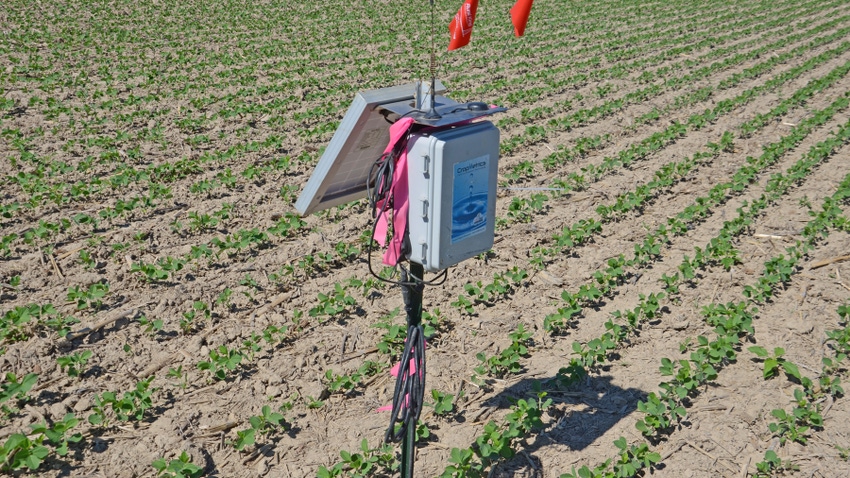
What is the No. 1 factor impacting yield potential? Many of you are thinking “soil moisture.” Would you invest money to know soil moisture levels and how they affect root development? If you have sandy soils and irrigate, you probably said “yes.” What about if you don’t irrigate?
Betsy Bower is an agronomist with Ceres Solutions who works with farmers in west-central Indiana. Ceres Solutions installs CropX soil moisture probes for about $1,500 per year per probe. One probe reflects what’s happening on 80 acres, or more if soil types don’t change too drastically.
“We install a large number of probes each year,” Bower says. “Many, but not all, are in irrigated fields. Farmers want to track soil moisture levels below the surface.”
Ceres Solutions installed a probe in the Soybean Watch ’22 field. The project is sponsored by Beck’s. The field was irrigated.
How CropX probe works
Bower or a staff member installs the probe a couple of weeks after planting. It stays in place until just before harvest. Each probe is installed 36 inches deep. The first soil moisture sensor is 2 inches below the surface; then there is a sensor every 4 inches along the probe. Data is automatically sent to the cloud.
“You can install an app and get real-time data on your phone,” Bower says.
The sensors record soil moisture readings. The app allows you to determine how much water is used through removal by roots. You get a visual picture in terms of what’s happening with moisture movement and removal below the surface in the first 3 feet of the profile.
Does it help a grower make better decisions about when to irrigate?
“That’s what everyone wants to know,” Bower says. “In theory, it should. In practice, most people who have irrigated for a long time have a good feel for when irrigation is needed and how much to apply based on how the crop reacts to stress. Information from the probe verifies what the grower may suspect in terms of moisture removal and the need for irrigation.
“There are times when irrigation is recommended due to root behavior and during critical growth stages to ensure nutrition moves to roots. For example, we might pick up a need through the probe if it’s dry after sidedressing.”
Data collected by the probe and the picture painted by the app should help growers who want to hone their skills at either irrigating or understanding the impacts of dry weather, Bower says. It allows you to nail down moisture usage and recharge from either rain or irrigation water in very quantitative, very precise terms.
Growers new to irrigation find probes are valuable in learning when and how much to irrigate, Bower adds.
If your goal is spoon-feeding the crop through fertigation, Bower believes information collected by the probe could be useful.
“We can pull out information on where roots are and how they’re working because we can tell how much moisture is pulled out of the soil,” she says. “If you study the results over time, you should learn a lot about roots and how they act in the soil.”
Read more about:
Soil Moisture SensorsAbout the Author(s)
You May Also Like




